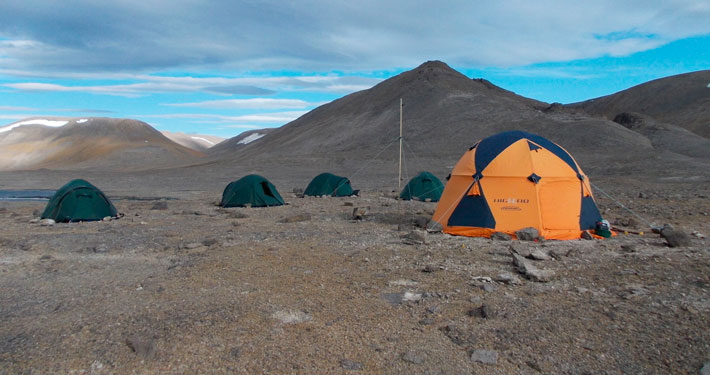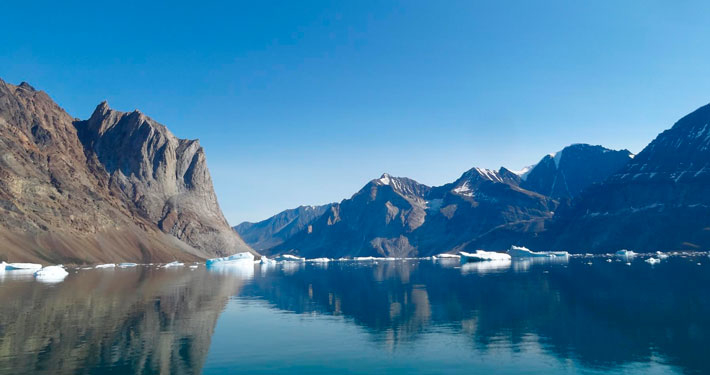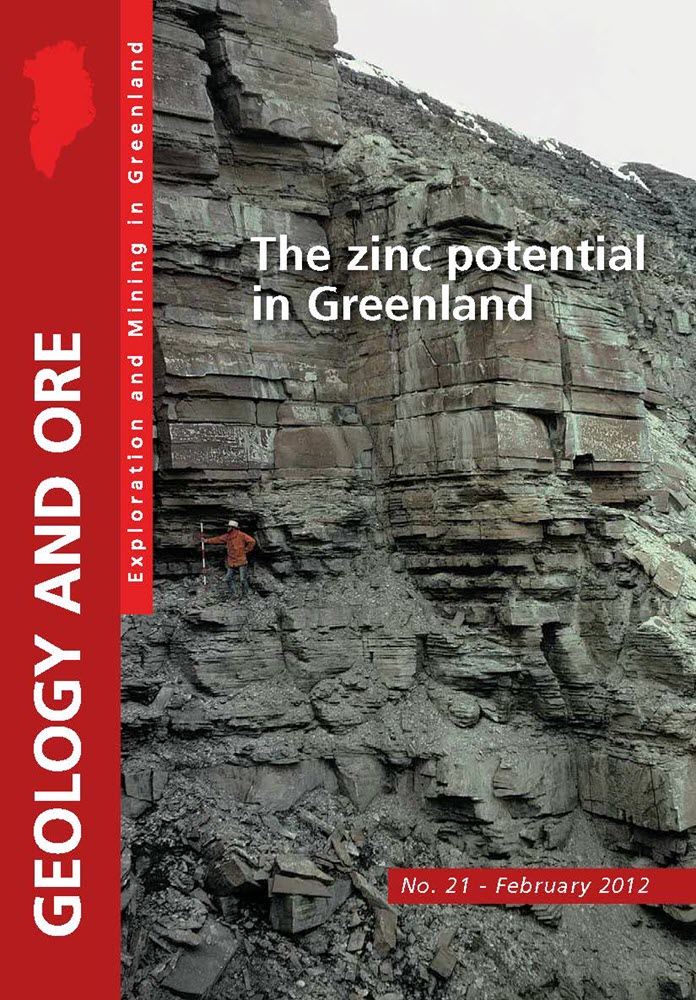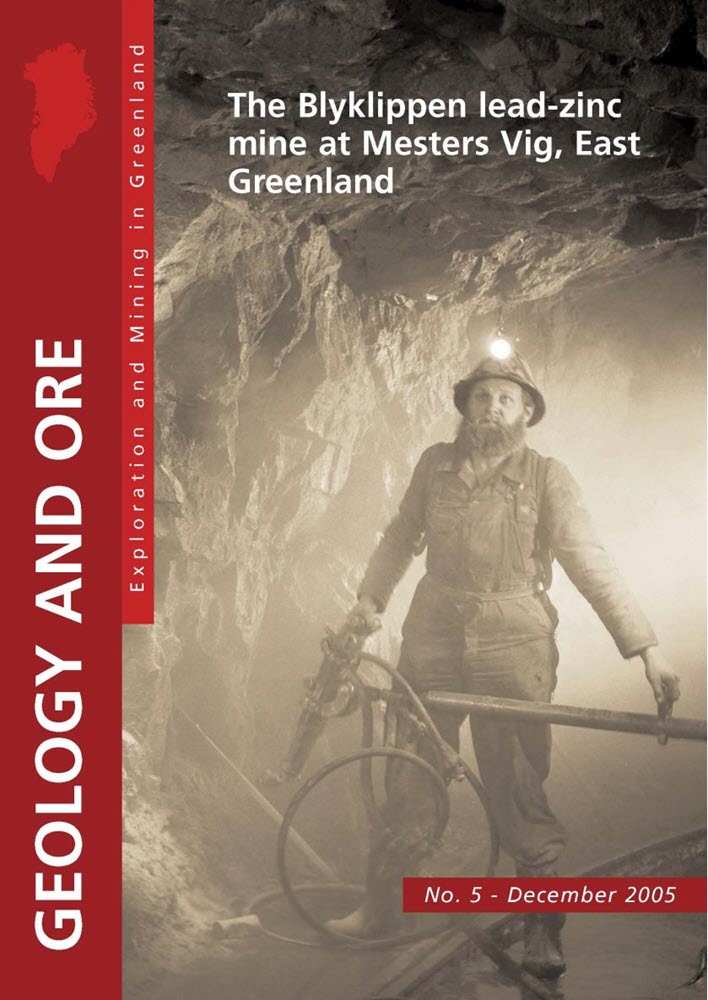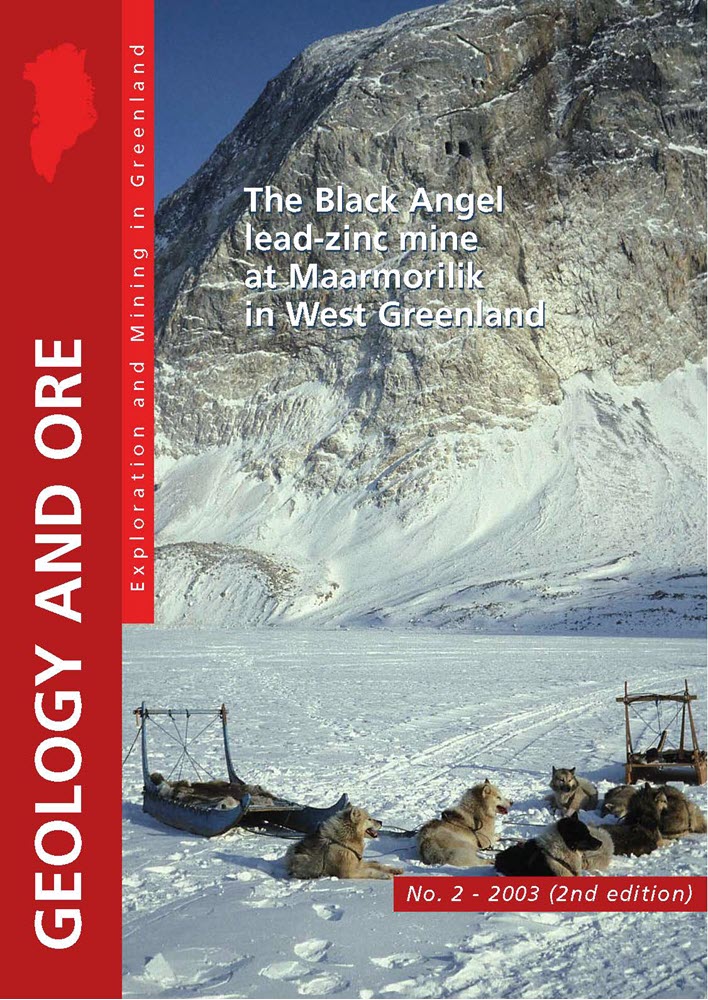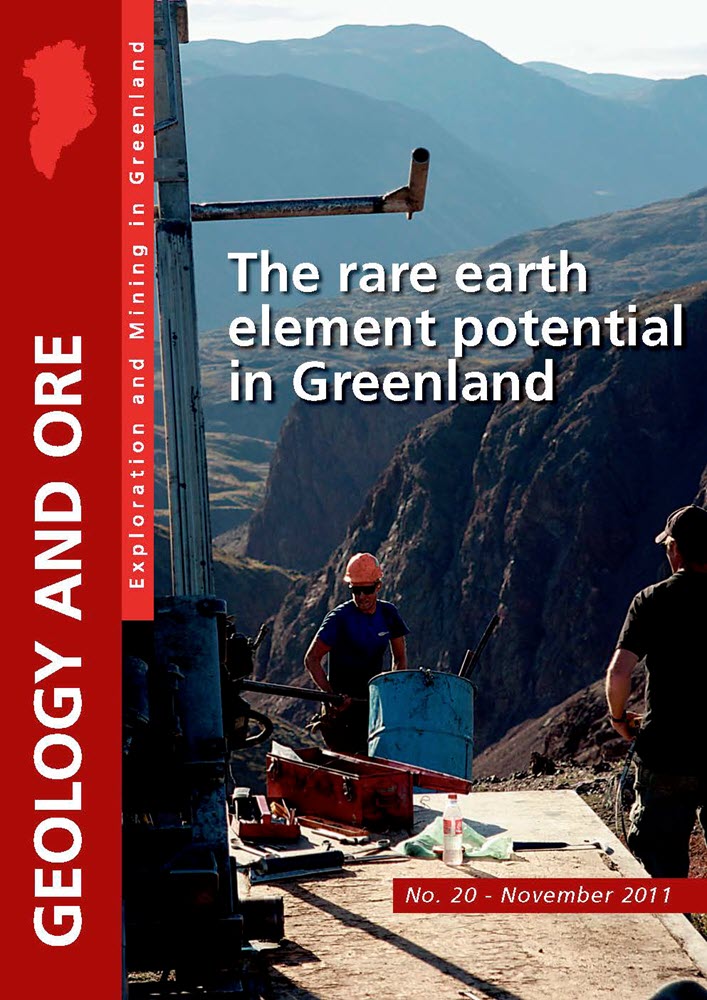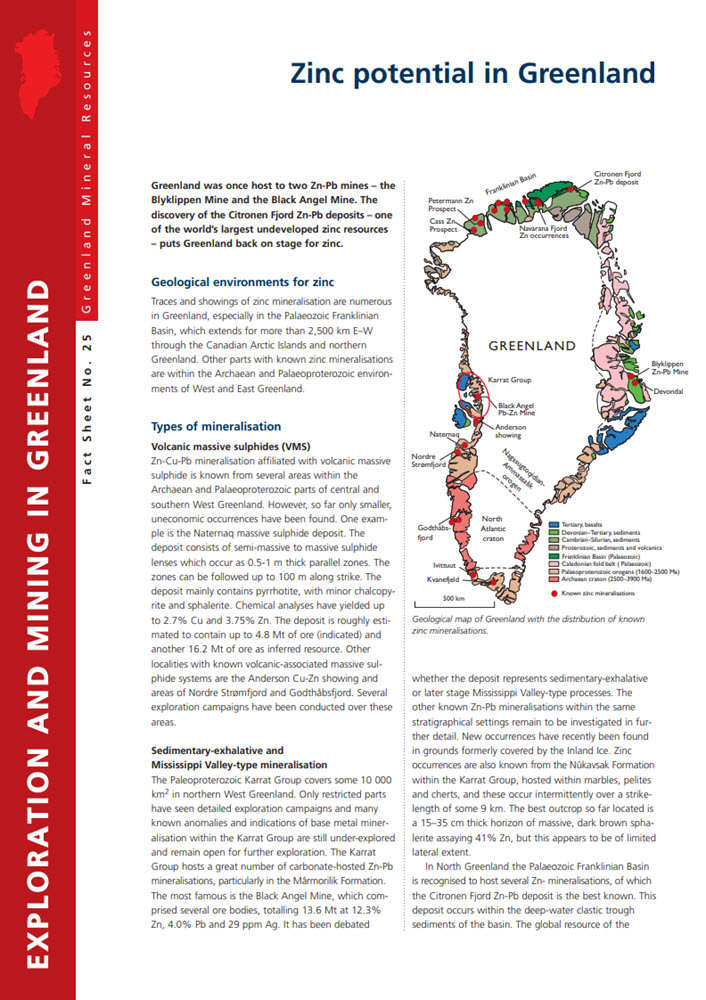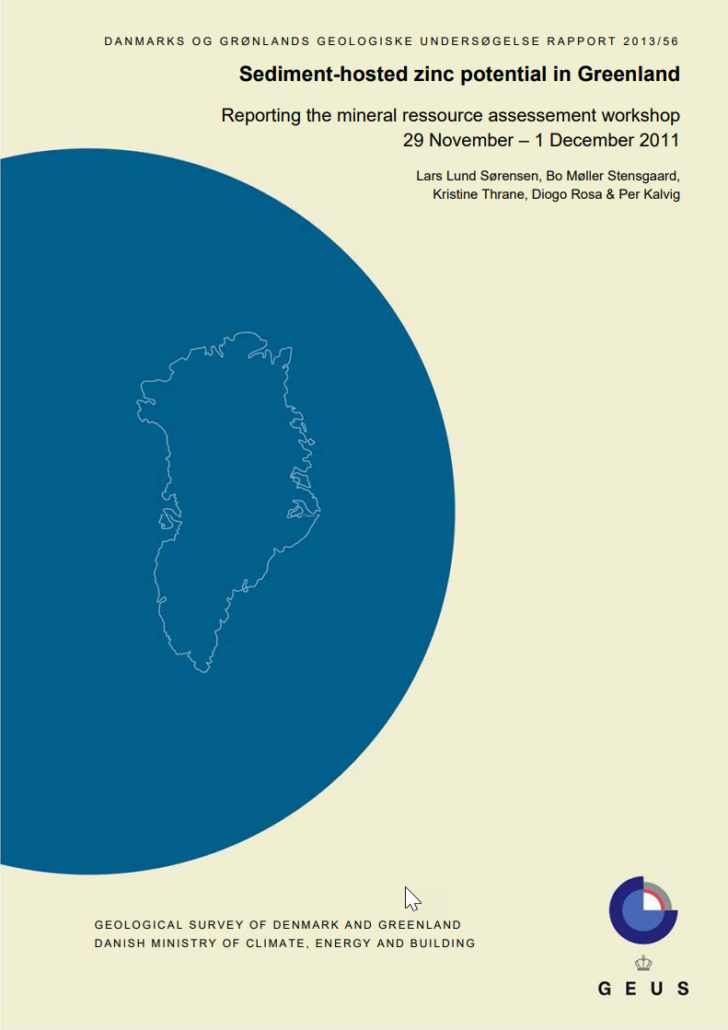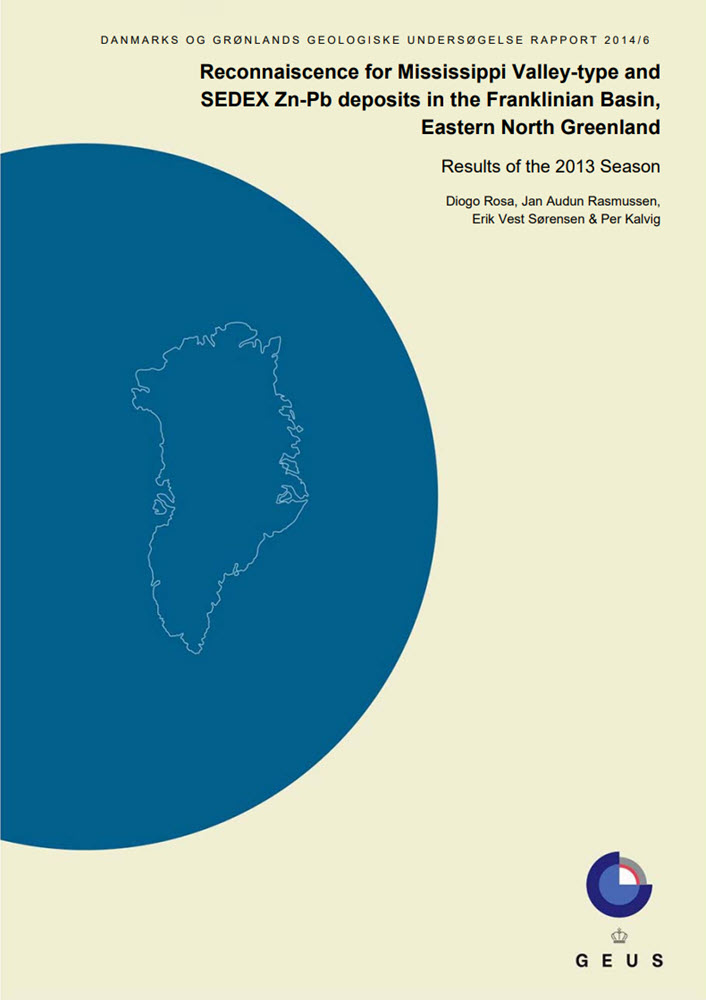The Franklinian Basin extends for more than 2,500 km across northern Greenland and the Canadian Arctic Islands, hosting the Polaris MVT deposit mined between 1981 and 2002.
In North Greenland, this basin is extensively exposed in an almost 1,000 km long and up to 200 km wide belt along the Arctic Ocean. While mining has yet to start in the Greenlandic part of the Franklinian Basin, reconnaissance mineral exploration in the 1990s demonstrated widespread Zn-Pb mineralisation within the stratigraphy. In 2011, all available data from this area was evaluated and calibrated. The same year a mineral potential assessment workshop following the USGS guidelines was held. The workshop concluded that this basin offers an excellent potential for sediment hosted zinc. Follow up work in 2012 and 2013 led to the identification of new showings.
Zinc mineralisation in the Franklinian Basin can be assigned to two distinct events. Earlier mineralisation, represented by the shale-hosted, exhalative citroen Fjord deposit in eastern North Greenland, believed to be one of the world’s largest undeveloped zinc resources, took place during opening of the basin.
Zinc mineralisation in the Franklinian Basin can be assigned to two distinct events. Earlier mineralisation, represented by the shale-hosted, exhalative Citroen Fjord deposit in eastern North Greenland, believed to be one of the world’s largest undeveloped zinc resources, took place during opening of the basin. Later mineralisation, exemplified by the Cass Fjord and the Petermann prospects in western North Greenland and several showings along the carbonate platform are interpreted to be related to brines circulating in the foreland of the developing Ellesmerian Orogen.

